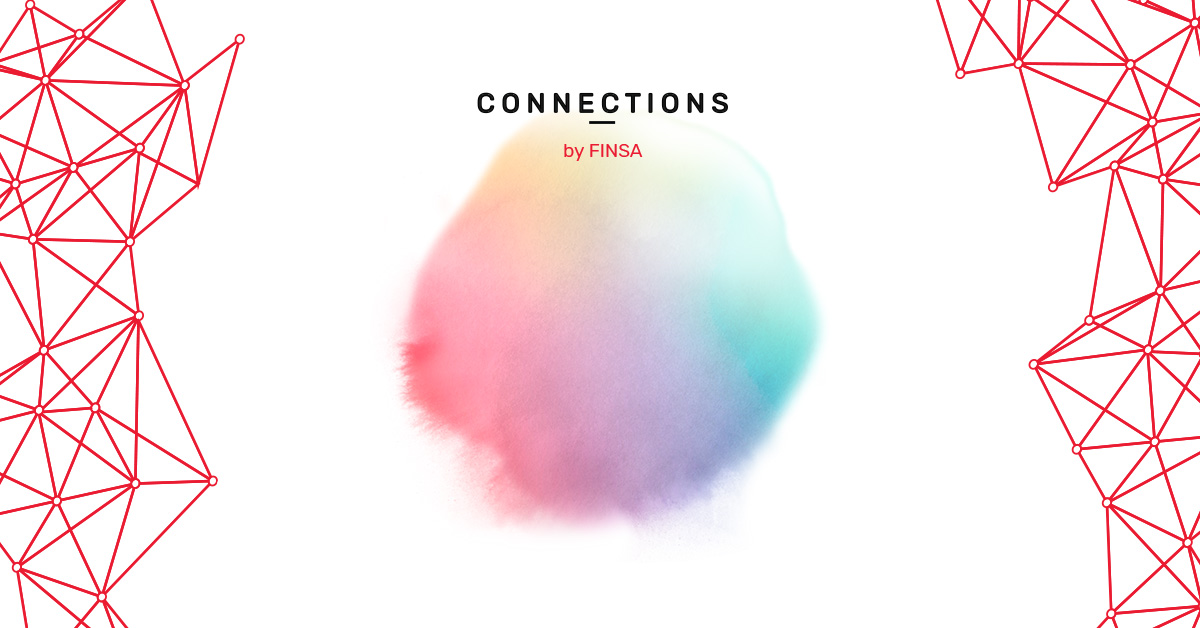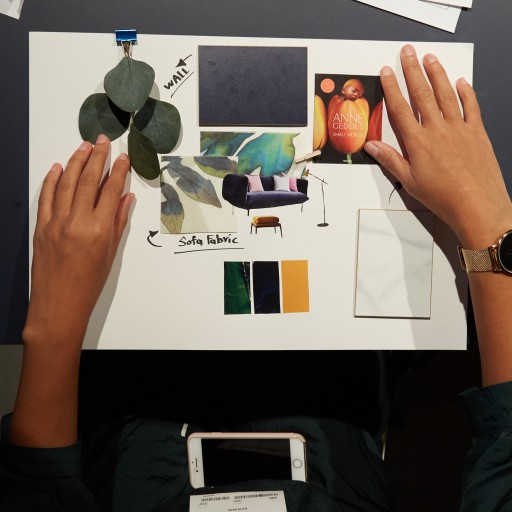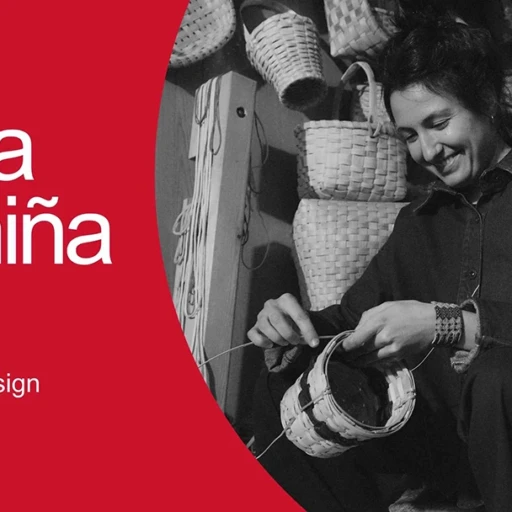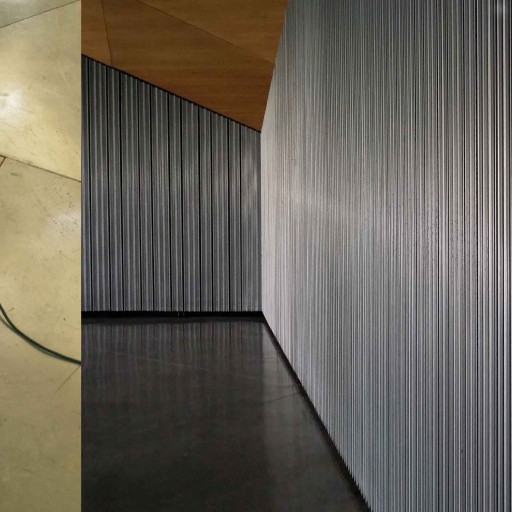Can you imagine life in black and white? How do you feel when it’s grey outside? This exercise, conceived of by the French writer and designer Jean-Gabriel Causse, makes us stop and think about the effect that colours have on our brains, our behaviour, and how we feel.
 The definition of colour itself includes all of its different facets, including sensations, light, style, and character. The ability to transmit all these things make it one of the pillars of creativity. Finding the right shade is much more than just visuals and aesthetics.
The definition of colour itself includes all of its different facets, including sensations, light, style, and character. The ability to transmit all these things make it one of the pillars of creativity. Finding the right shade is much more than just visuals and aesthetics.
What is chromotherapy ?
The psychology of colour is often used in branding and marketing, but it is also a powerful tool in interior design. In fact, it probably has the biggest impact on the sensation that we feel when we enter a space. The power of colour has taken an ancient discipline rooted in Egyptian mythology, that of colour therapy or chromotherapy, and turned into a trend.
Architect Izaskun Chinchilla explains the important role of colour in following way: “Colour changes people’s lives, making it possible for to them concentrate better at work or find more pleasure in being at home. It even improves family dynamics and reduces the number of arguments.” Colour has the power to heal our bodies, the way we feel, and our souls.
Ver esta publicación en Instagram
Finding energy in colour
How can we improve the way we feel using chromotherapy? Pantone has given us the first clue. After a very grey year, during which neutrals and earthy tones dominated our lives, we are looking for energy through colour, a strength that will help us fight pandemic fatigue.
For 2021, Pantone chose not one, but two colours of the year, a combination that gives us a sense of both vibrancy and strength – 13-0647 Illuminating and 17-5104 Ultimate Gray – combining the energy of the sun with a feeling of reliability. Leatrice Eiseman, the Executive Director of the Pantone Colour Institute, explains that the goal was to send “a message of positivity supported by fortitude. Practical and rock solid but at the same time warming and optimistic, this is a colour combination that gives us resilience and hope”.
Pantone is a trendsetter and interior design will make sure that this energy and balance is felt in the spaces it creates – on the walls, in furniture, and in textiles.
Ver esta publicación en Instagram
Adding some colour to create a bigger, tidier space
COVID-19 has changed the vision we have for our homes. Now more than ever, we are looking for that sense of wellbeing in the place that has become our refuge. The number of people renovating their homes has increased astronomically over the last year. Colour is the perfect ally in this new approach to our homes, as it can help create a sense of light and spaciousness in smaller spaces, as well as giving them a unique touch. Why not try decorating with paint?
We found several examples of designers doing just that. Studios like 2LG and CaSa use chromotherapy in their refurbishment projects. American designer Amanda Nisbet uses colour in all of her projects. She is convinced that “its ability to singularly and definitively create an experience makes it one of the most important and valuable tools in interior design”.
It can also be used to help give smaller spaces new life. White is stepping aside and making way for decorating with colour. Painting the ceiling with new shades adds depth, decorating with horizontal stripes makes spaces seem bigger than they really are, and using colour blocking makes them seem tidier.
CaSa Studio refurbished an apartment in Barcelona and decided to make the central area stand out by using colour blocking, using a vibrant terracotta colour and making it the focus of the whole apartment. The colour blocking continues throughout the house, with softer shades and eye-catching ceilings.
Ver esta publicación en Instagram
What colour should I choose?
It’s so important to choose the right shades in order to have a positive effect on each and every space. Chromotherapy is about choosing colours depending on the room’s use, as well as the personalities and state of mind of the people who use it. The first step is to consider the main purpose of each room. Each colour evokes different emotions, which is why we must take into account the atmosphere that we want to create when choosing the different shades that we want to use in our home.
Warm colours, like red, orange, and yellow, generally make us feel energetic, optimistic, and happy. They are colours of action and increase our heartrate, stimulate our appetite, and encourage activity.
On the other hand, cool colours, like green or blue, are more relaxing and evoke a sense of tranquillity. They can alleviate stress, which is why they are the right choice for rooms where we want to relax, such as the bedroom.
Using cool shades in these rooms will improve sleep quality, which can also be improved by using the right lighting, the intensity and colour of which should change and adapt to our biological rhythms, even making it seem like the sun is rising.
Ver esta publicación en Instagram
Colour psychology
As you can see, each colour activates specific pathways in our brain. That’s why chromotherapy can help us improve the functionality of spaces, and not just in our homes.
Jean-Gabriel Causse reminds us that colours influence our morale and even our productivity levels. Working in a room with a white wall can make us feel exhausted. On the other hand, blue and green offices stimulate creativity.
In colour psychology, pink is taking on an increasingly important role. It reminds us of La Vie En Rose that Édith Piaf sang about and evokes both happiness and peace.
Pink calms the mind, reduces aggression, and stimulates creativity. Using it in offices, prisons, and preschools is recommended. “In England, we took classrooms that were painted beige, classrooms that were for seven- or eight-year-olds, and we painted them pink, then compared the children’s drawings from when the classrooms were beige and when they were pink,” says Jean-Gabriel Causse. The result: the drawings were “much more positive” after the classrooms had been painted pink. .
Ver esta publicación en Instagram
The healing powers of coloured light
The power of colour goes far beyond its functionality and our state of mind. Here at Connections by Finsa, we’ve previously written about the use of colour in hospitals, but its healing powers are intensified by another aspect of interior design that is key to our wellbeing: light.
Light has a non-visual effect on our body. Lighting specialists like Simón highlight the importance of biodynamic lighting, meaning “lighting that imitates the sun over the course of the day, activating different neurophysiological systems in our body”.
The team at Simón explain that humans react when light changes colour. “The first light of the day, which is cold with a blue undertone, activates us. The sunset, which is a warm rosy colour, relaxes us and prepares us for rest. When we have problems synchronising with the sun’s cycle, we experience issues with sleep, have difficulty concentrating, or feel fatigued”.
That’s why it’s so important that hospitals have adequately adapted lighting “so that the levels of melatonin in blood are similar to those that would be produced if we were exposed to 100% natural light”.
At Simón, they work on projects that synchronise artificial lighting with the cycle of natural light, humanising indoor spaces and adapting them to the needs of the people that use them. They have also actively participated in several studies focused on lighting solutions that promote health and wellbeing, especially in the hospital sector.
Ver esta publicación en Instagram
Memory stimulation is another effect of this type of light. A study from the University of Montreal reported that, when a person was exposed to blue light while completing memorisation tasks, the responses in the frontal and parietal lobes of their brain improved.
These therapeutic properties have also been found to have another special application, this time for elderly people, with Snoezelen rooms. These rooms are based on the idea of combining light and colour to provide sensory stimulation, improving overall wellbeing. The objective is to improve the quality of life of people with disabilities and elderly people in severe cognitive decline or with dementia, something which can affect motor skills and result in neurological changes.
Ver esta publicación en Instagram




